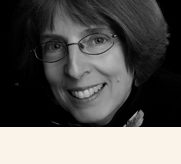In the Jan/Feb 2012 issue of Poets & Writers  magazine, John Stazinski (page 29) bemoans the tendency of MFA programs to concentrate nearly exclusively on the short story at the expense of the novel because it’s too time-consuming to workshop complete novels. Thank goodness Grub Street is now experimenting with a novel-revision class to fill the gap.
magazine, John Stazinski (page 29) bemoans the tendency of MFA programs to concentrate nearly exclusively on the short story at the expense of the novel because it’s too time-consuming to workshop complete novels. Thank goodness Grub Street is now experimenting with a novel-revision class to fill the gap.
 Lucky for me, VCFA was not one of those MFA programs. In the first few semesters, there were limits to the number of pages I was allowed to submit for critique/review, but in the final semester, the complete draft of a novel was welcome. It was an intense final semester. My faculty advisor, Kathi Appelt, required multiple re-writes of my novel—never mind line edits. The focus was on structure—on the intersection of the story arc and the emotional arc—on Big Picture elements of the craft.
Lucky for me, VCFA was not one of those MFA programs. In the first few semesters, there were limits to the number of pages I was allowed to submit for critique/review, but in the final semester, the complete draft of a novel was welcome. It was an intense final semester. My faculty advisor, Kathi Appelt, required multiple re-writes of my novel—never mind line edits. The focus was on structure—on the intersection of the story arc and the emotional arc—on Big Picture elements of the craft.
Now I can’t read a novel without marveling at and dissecting its structure. Of course writers need to learn how to craft engaging characters and settings with mesmerizing descriptive details. But plot matters! A well-conceived story arc is just as necessary as beautiful prose.
Take John Green’s  Looking for Alaska, for example. He intentionally deviates from the classic climax-and-denouement structure with brilliant results. Early chapters are labeled “before” and later chapters “after” and the life-changing moment occurs in the middle, leading to a denouement that at first glance appears too long. But no. The climax is not that moment-in-the-middle, but comes when the protagonist realizes he can’t live fully if he remains stuck on life “before Alaska” and “after Alaska.” The structure Green has given to his novel is the very structure the protagonist is struggling to escape.
Looking for Alaska, for example. He intentionally deviates from the classic climax-and-denouement structure with brilliant results. Early chapters are labeled “before” and later chapters “after” and the life-changing moment occurs in the middle, leading to a denouement that at first glance appears too long. But no. The climax is not that moment-in-the-middle, but comes when the protagonist realizes he can’t live fully if he remains stuck on life “before Alaska” and “after Alaska.” The structure Green has given to his novel is the very structure the protagonist is struggling to escape.
 Or take Uma Krishnaswami’s delightful The Grand Plan to Fix Everything. Her theme involves life’s coincidences, and she presents the story from the points of view (close-third person in alternating chapters) of one protagonist and multiple secondary characters. Readers glimpse a postal carrier here and a Bollywood movie star there, and in the end, of course, the characters’ lives intersect. But it’s the structure of the novel in multiple POVs that makes the intersection work.
Or take Uma Krishnaswami’s delightful The Grand Plan to Fix Everything. Her theme involves life’s coincidences, and she presents the story from the points of view (close-third person in alternating chapters) of one protagonist and multiple secondary characters. Readers glimpse a postal carrier here and a Bollywood movie star there, and in the end, of course, the characters’ lives intersect. But it’s the structure of the novel in multiple POVs that makes the intersection work.
It’s one thing to know the story you want to tell, and another to figure out how best to tell it. Such is my current quandary. Last week I completed the draft of a novel, and I’m now letting it rest so that I can return later with fresh eyes to ask: what structure—what sequence of scenes—will provide maximum dramatic tension for my readers? Right now I’ve got one viewpoint in part one and another in part two. But will alternating the points of view (the way Uma did) serve this story better? Hmm. Thank goodness I have early-level reader-friends willing to critique an entire novel, not simply ten or twenty pages at a time.

I’m in the throes of that second draft right now, Anne, restructuring scenes, moving them around, and mostly just deleting and writing them again to better suit the revised character motivations. We were so lucky to have advisors that looked at our entire novel and helped us stitch it well. I’ve just picked up The Plot Whisperer and I’m hoping to learn some new tricks, I found Save the Cat to be an excellent tool for plotting.
Thanks for the suggestions for books on crafting plots. And I agree — we were so lucky to have done our MFAs at Vermont. Such a nurturing and supportive MFA environment.